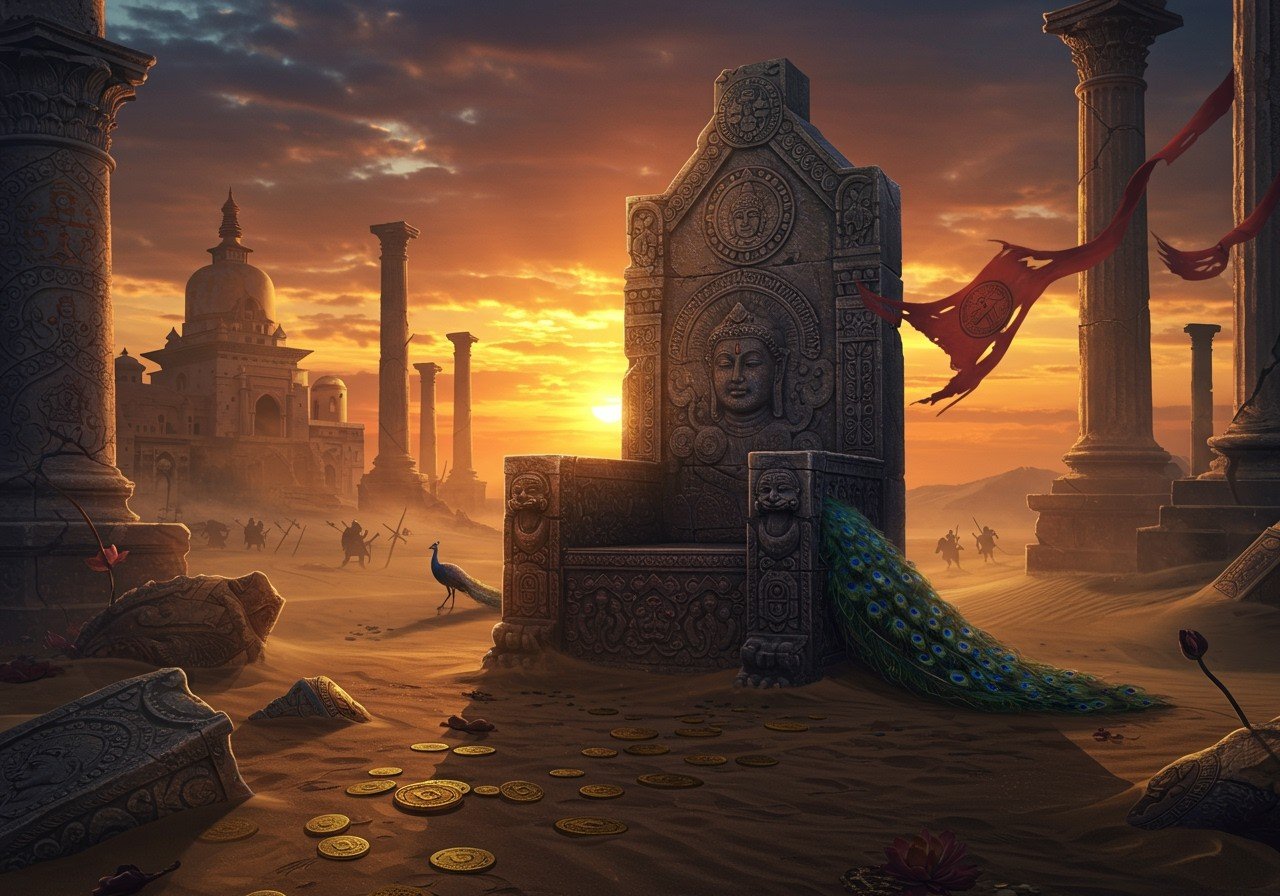
The Kushan Empire, a powerful force in ancient India, flourished between the 1st and 3rd centuries CE. Under Emperor Kanishka’s rule, the empire reached its zenith, facilitating trade along the Silk Road and fostering cultural exchange between East and West. However, by the early 3rd century, internal conflicts, economic woes, and external pressures weakened the empire. In 225 AD, the Persian Empire’s invasion marked a turning point, leading to the Kushan Empire’s eventual downfall.
Origins and Peak
Originating as a nomadic tribe from Central Asia, the Kushans expanded their dominion over vast territories encompassing northern India, Pakistan, and Afghanistan. Emperor Kanishka’s reign ushered in a golden age, marked by cultural amalgamation, religious tolerance, and economic prosperity. Buddhism thrived under Kushan patronage, evident in the numerous monasteries and stupas they supported. Cities like Mathura and Peshawar became vibrant hubs of art, commerce, and intellectual exchange.
Economic Factors in the Decline
The Kushan Empire’s economic strength was deeply intertwined with its control over vital trade routes linking the Roman Empire, China, and India. However, political instability in Rome and the rise of the Sassanian Empire in Persia disrupted these trade networks, impacting the flow of goods and wealth. The depletion of precious metals used for coinage led to monetary instability, further exacerbating the empire’s economic woes. The loss of control over key trade routes significantly hampered the Kushans’ ability to generate revenue and maintain their territorial hold.
Internal Political Strife
Internal political conflicts and succession disputes significantly destabilized the Kushan Empire. The death of strong rulers like Kanishka created power vacuums, leading to infighting among the nobility. The empire fragmented into smaller, semi-independent states, weakening central authority and making it vulnerable to external threats. The rise of regional powers like the Satavahanas in the Deccan and the Guptas in northern India further challenged Kushan supremacy.
Military Defeats and External Pressures
The Kushan Empire faced mounting military challenges from external forces. The Sassanian Empire, under rulers like Ardashir I and Shapur I, launched aggressive campaigns, capturing key territories in the west. Simultaneously, nomadic groups like the Huns posed a constant threat, conducting raids and invasions that further weakened the empire. The decline in military strength and the loss of strategic locations left the Kushans unable to defend their borders effectively.
Religious and Cultural Shifts
As the Kushan Empire declined, significant religious and cultural changes unfolded. The resurgence of Brahmanical traditions and the growing popularity of Hinduism challenged the dominance of Buddhism. This shifting religious landscape impacted the loyalty of the local population, eroding support for the Kushan rulers. The rise of the Gupta Empire, with its emphasis on Hindu culture and Sanskrit literature, further overshadowed the Kushan legacy.
Consequences of the Decline
The fall of the Kushan Empire had profound consequences for the Indian subcontinent. The resulting fragmentation of northern India paved the way for the rise of the Gupta Empire. The disruption of established trade networks impacted economic stability and cultural exchange. However, the Kushan influence persisted in art, architecture, and religious practices, leaving a lasting mark on the region’s cultural heritage. The spread of Buddhism to East Asia, facilitated by the Kushans, continued to shape the religious landscape of that region for centuries.
Poojn.in: Preserving Cultural Heritage
Just as the Kushans played a vital role in fostering cultural and religious exchange, Poojn.in, India’s largest cultural goods and services store, is dedicated to preserving and promoting India’s rich cultural heritage. We offer a wide array of products and services that cater to diverse religious and cultural practices. Explore our extensive collection of puja items, sacred texts, spiritual art, and much more at www.poojn.in.
Explore our diverse offerings:
-
Authentic Puja Items: Discover a wide selection of high-quality puja items, including diyas, incense sticks, and havan samagri, essential for performing traditional rituals and ceremonies. Shop now.
-
Sacred Texts and Spiritual Literature: Immerse yourself in the wisdom of ancient scriptures and spiritual literature from various traditions. Browse our collection.
-
Spiritual Art and Home Decor: Adorn your home with beautiful spiritual art, including statues, paintings, and wall hangings, that create a serene and inspiring atmosphere. Find unique pieces.
Poojn.in is committed to providing authentic and high-quality products that connect you with your cultural and spiritual roots. Visit us today and embark on a journey of discovery.


